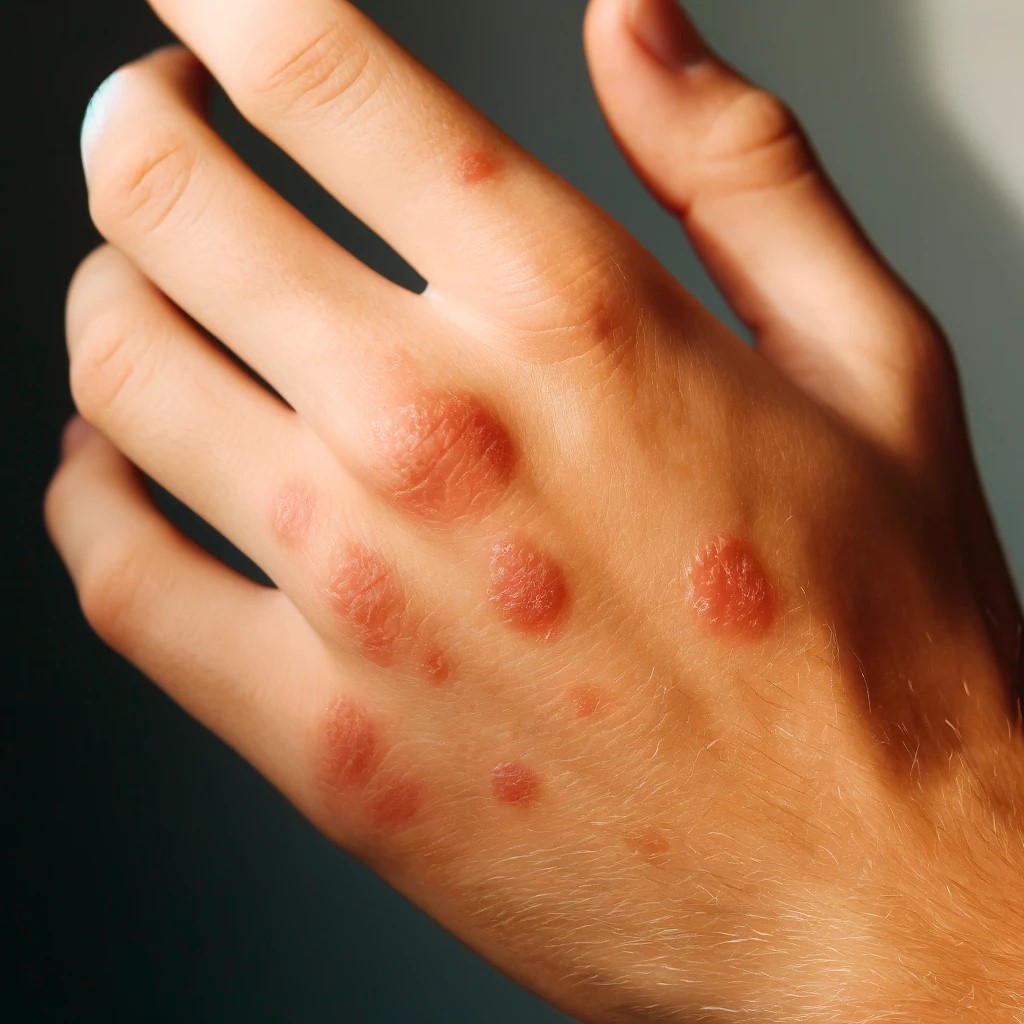Actinic keratosis (AK), also known as solar keratosis, is a rough, scaly patch or bump that forms on sun-damaged skin. It’s the most common precancerous skin condition, affecting many people.
Here’s a closer look at AKs:
What causes them?
The culprit behind AKs is ultraviolet (UV) radiation, primarily from the sun but also from tanning beds. Over time, UV exposure damages the DNA in skin cells, leading to abnormal growth and the development of AKs.
Who’s most at risk?
While anyone can develop AKs, certain factors increase the risk:
- Fair skin: People with light skin, blonde or red hair, and blue, green, or gray eyes have less natural protection from UV rays.
- Sun exposure: People who spend a lot of time outdoors or frequently use tanning beds are more susceptible.
- Age: AKs are more common in older adults due to cumulative sun exposure.
- Weakened immune system: Individuals with compromised immunity are at higher risk.
What do they look like?
AKs typically appear as:
- Small (less than half an inch)
- Dry, scaly, or crusty patches
- Red, pink, tan, or flesh-toned
- Raised or flat
They are often more easily felt than seen due to their rough texture.
Why should I care?
While AKs themselves are not cancerous, some have the potential to develop into squamous cell carcinoma, a type of skin cancer. Early detection and treatment are crucial.
How are they diagnosed?
A dermatologist can usually diagnose AKs through a simple skin exam. In some cases, a biopsy (removal of a small tissue sample) might be needed for confirmation.
Treatment options:
Several treatment options are available for AKs, depending on factors like number, location, and severity. Common treatments include:
- Freezing (cryotherapy): Liquid nitrogen is used to freeze and destroy the AK.
- Topical medications: Creams or ointments are applied to kill abnormal cells.
- Scraping or shaving: The AK is removed with a surgical tool.
- Light therapy: Light with specific wavelengths targets and destroys the AKs.
Preventing AKs:
The best approach to AKs is prevention by limiting UV exposure:
- Sun protection: Seek shade, wear protective clothing, and apply broad-spectrum sunscreen with SPF 30 or higher daily.
- Limit tanning: Avoid tanning beds and excessive sun exposure.
- Regular skin checks: Examine your skin regularly for new or changing growths and see a dermatologist for any concerns.
Disclaimer:
The information provided here is for general knowledge only and does not substitute for professional medical advice. If you notice any suspicious spots on your skin, consult a dermatologist for proper diagnosis and discuss treatment options specific to your case.
Don’t ignore those rough patches!
Early detection and treatment of AKs are vital. If you notice any suspicious spots on your skin, consult a dermatologist for proper diagnosis and discuss treatment options. Remember, sun protection is key in preventing AKs and safeguarding your skin’s health.
